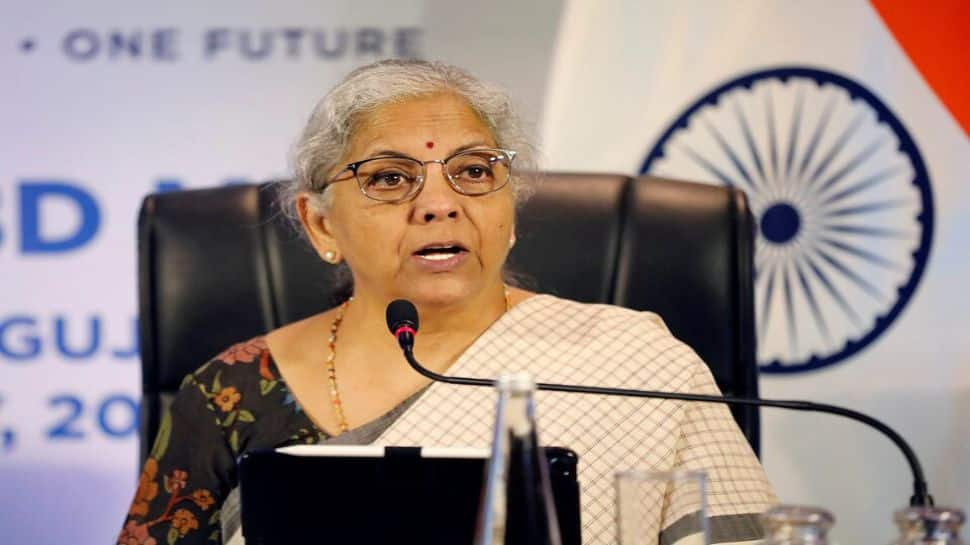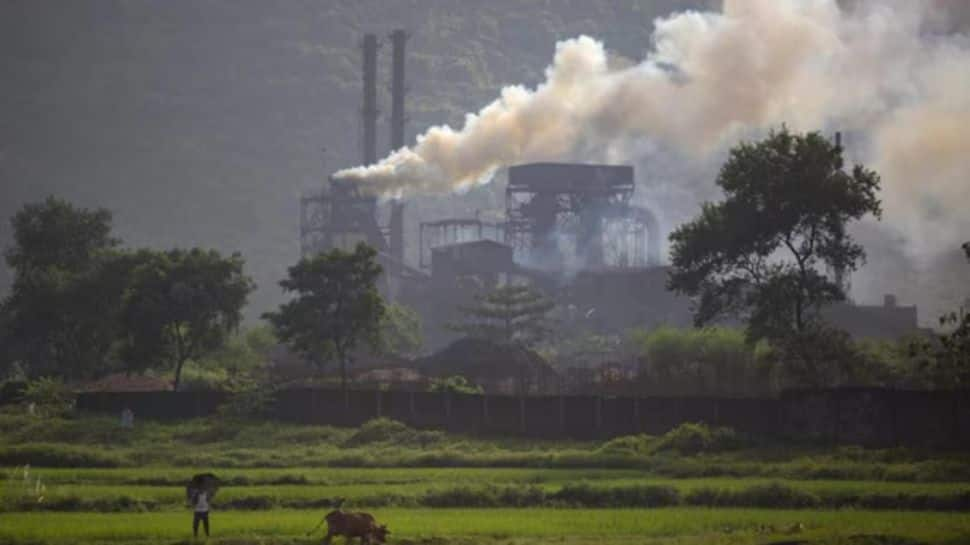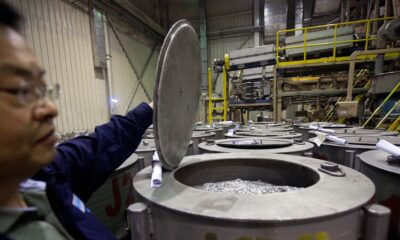Business
John Deere faces a crossroads amid decreasing demand, increasing investments

Attendees view a John Deere 7R 270 row crop tractor at the Deere & Co. booth during the World Ag Expo at the International Agri-Center in Tulare, California on February 11, 2025.
Patrick T. Fallon | AFP | Getty Images
John Deere is facing a crossroads as the company continues to see weaker demand in the agricultural sector even while it has committed to investing millions in U.S. manufacturing and promised a brighter road ahead.
The agricultural machinery company warned on its fiscal third-quarter earnings call last week that it is seeing much softer demand, posting significant year-over-year decreases in net income and sales.
The company is working to position itself in the larger agricultural sector, which has seen growing challenges with rising costs, climate change impacts, labor shortages and more.
Farmers have also been dealing with lower prices on crops like corn and grain and have pared back their spending as a result. In turn, Deere’s target audience has pulled back on its willingness to buy new agricultural equipment.
Deere has also been hit by tariff costs, estimating that it could take a $600 million hit for the fiscal 2025 year. The company has already seen $300 million in tariff expenses year to date.
Just after reporting its earnings, the company confirmed to CNBC that it announced 238 layoffs across its Illinois and Iowa factories, adding to thousands who have been laid off over the past year. The company cited decreased demand and lower order volumes as the main factors behind the job reductions.
“As stated on our most recent earnings call, the struggling ag economy continues to impact orders for John Deere equipment,” Deere told CNBC in a statement. “This is a challenging time for many farmers, growers and producers, and directly impacts our business in the near term.”
The manufacturer employs more than 70,000 people globally.
Still, Deere has identified enough green shoots to point to a less-troubling future.
On its most recent earnings call, company executives emphasized the growth in demand in both Europe and South America after seeing weakness in North America. Despite macroeconomic headwinds, Deere’s president of its worldwide agriculture and turf division said the company remains confident in its future.
“We think there’s positive tail winds from both what we see in the trade deals, and we think there are positive tail winds from what we see in tax policy,” Cory Reed said on the call.
And in June, the company released a statement that “myth busted” any claims that Deere might need to shut down its U.S. manufacturing due to the fall in demand. Instead, the company said it was making a “bold move” to invest $20 billion into U.S. manufacturing over the next 10 years.
It follows a similar string of announcements from companies trying to shore up their “Made in the USA” bona fides since President Donald Trump took office. Before the election, Trump threatened Deere with 200% tariffs if it moved production to factories in Mexico.
“Over the next decade, we will continue to make significant investments in our core U.S. market,” CEO John May said in the statement in June. “This underscores our dedication to innovation and growth while staying cost-competitive in a global market.”
What Wall Street is saying
Despite the struggles in the broader agricultural sector, Wall Street analysts on the whole remain optimistic about Deere’s road ahead.
Oppenheimer analyst Kristen Owen wrote last week that she remains bullish on Deere and expects increased confidence into 2026, telling CNBC that she believes the company is taking an “appropriately cautiously optimistic outlook.”
Even Truist analyst Jamie Cook, who lowered his target after Deere’s earnings last week and emphasized an uncertain outlook for 2026, said he still believes this year marks a bottoming for the company’s earnings per share.
The company’s stock has seen a nearly 30% increase over the one-year period.
Deere stock
Looking at Deere’s history and the hit that the farming industry has taken over the past few years, D.A. Davidson analyst Michael Shlisky told CNBC he can’t imagine the company going much lower from here.
“The way I’d say it is 2025 could be the worst, the lowest number of tractor sales in the history of modern agriculture,” he said, with the potential for the trend to swing upward becoming imminent.
While the optimism might not be directly translating to sales today, Shlisky said the “hints” of progress are enough to make him excited about the company’s future, including the growth in Europe and South America.
“When parts of the world are doing better, the parts that aren’t doing as well are likely to follow,” Shlisky said.
While not commenting directly on the latest round of layoffs, Shlisky said he doesn’t think investors would be surprised to see the necessary cost-cutting measures at this point in the company’s trajectory.
Similarly, Morgan Stanley analysts wrote in a note that while demand may be decreasing, they stand behind a thesis that Deere earnings have bottomed and that the company remains an “attractive opportunity longer term.”
Analyst Angel Castillo told CNBC that Deere and the agricultural sector at large are cyclical, so while the short-term remains uncertain, the long-term outlook for the company is likely to bounce back, noting that precision agriculture in particular is likely to take off.
“This is one of the unique areas where we think even if there’s more challenges next year, as we kind of expect, the earnings downside risk is much more de-risked or already captured by expectation,” Castillo said.
With its latest cost-cutting measures, Deere is saving itself by not overproducing or creating a supply chain issue, Castillo added.
“The reality today is that we’re still in an uncertain environment, and I think they’re managing in a disciplined, rational way to try to make sure not to create a worse environment,” he said.

Business
India’s $5 Trillion Economy Push Explained: Why Modi Govt Wants To Merge 12 Banks Into 4 Mega ‘World-Class’ Lending Giants

India’s Public Sector Banks Merger: The Centre is mulling over consolidating public-sector banks, and officials involved in the process say the long-term plan could eventually bring down the number of state-owned lenders from 12 to possibly just 4. The goal is to build a banking system that is large enough in scale, has deeper capital strength and is prepared to meet the credit needs of a fast-growing economy.
The minister explained that bigger banks are better equipped to support large-scale lending and long-term projects. “The country’s economy is moving rapidly toward the $5 trillion mark. The government is active in building bigger banks that can meet rising requirements,” she said.
Why India Wants Larger Banks
Sitharaman recently confirmed that the government and the Reserve Bank of India have already begun detailed conversations on another round of mergers. She said the focus is on creating “world-class” banks that can support India’s expanding industries, rising infrastructure investments and overall credit demand.
She clarified that this is not only about merging institutions. The government and RBI are working on strengthening the entire banking ecosystem so that banks grow naturally and operate in a stable environment.
According to her, the core aim is to build stronger, more efficient and globally competitive banks that can help sustain India’s growth momentum.
At present, the country has a total of 12 public sector banks: the State Bank of India (SBI), the Punjab National Bank (PNB), the Bank of Baroda, the Canara Bank, the Union Bank of India, the Bank of India, the Indian Bank, the Central Bank of India, the Indian Overseas Bank (IOB) and the UCO Bank.
What Happens To Employees After Merger?
Whenever bank mergers are discussed, employees become anxious. A merger does not only combine balance sheets; it also brings together different work cultures, internal systems and employee expectations.
In the 1990s and early 2000s, several mergers caused discomfort among staff, including dissatisfaction over new roles, delayed promotions and uncertainty about reporting structures. Some officers who were promoted before mergers found their seniority diluted afterward, which created further frustration.
The finance minister addressed the concerns, saying that the government and the RBI are working together on the merger plan. She stressed that earlier rounds of consolidation had been successful. She added that the country now needs large, global-quality banks “where every customer issue can be resolved”. The focus, she said, is firmly on building world-class institutions.
‘No Layoffs, No Branch Closures’
She made one point unambiguous: no employee will lose their job due to the upcoming merger phase. She said that mergers are part of a natural process of strengthening banks, and this will not affect job security.
She also assured that no branches will be closed and no bank will be shut down as part of the consolidation exercise.
India last carried out a major consolidation drive in 2019-20, reducing the number of public-sector banks from 21 to 12. That round improved the financial health of many lenders.
With the government preparing for the next phase, the goal is clear. India wants large and reliable banks that can support a rapidly growing economy and meet the needs of a country expanding faster than ever.
Business
Stock market holidays in December: When will NSE, BSE remain closed? Check details – The Times of India

Stock market holidays for December: As November comes to a close and the final month of the year begins, investors will want to know on which days trading sessions will be there and on which days stock markets are closed. are likely keeping a close eye on year-end portfolio adjustments, global cues, and corporate earnings.For this year, the only major, away from normal scheduled market holidays in December is Christmas, observed on Thursday, December 25. On this day, Indian stock markets, including the Bombay Stock Exchange (BSE) and National Stock Exchange (NSE), will remain closed across equity, derivatives, and securities lending and borrowing (SLB) segments. Trading in currency and interest rate derivatives segments will continue as usual.Markets are expected to reopen on Friday, December 26, as investors return to monitor global developments and finalize year-end positioning. Apart from weekends, Christmas is the only scheduled market holiday this month, making December relatively quiet compared with other festive months, with regards to stock markets.The last trading session in November, which was November 28 (next two days being the weekend) ended flat. BSE Sensex slipped 13.71 points, or 0.02 per cent, to settle at 85,706.67, after hitting an intra-day high of 85,969.89 and a low of 85,577.82, a swing of 392.07 points. Meanwhile, the NSE Nifty fell 12.60 points, or 0.05 per cent, to 26,202.95, halting its two-day rally.
Business
A Silent Threat Looms Over India’s Big Industries – Is Growth In Danger?

New Delhi: As Indian exporters were already dealing with the heavy impact of tariffs imposed by US President Donald Trump, a new threat has come the fore. A report by global consulting firm BCG warns that India’s industries linked to exports and bound by international rules are now at risk from climate change. The most vulnerable sectors include aluminium, iron, and steel, which could face big losses in profits, disruptions in operations and long-term challenges to their sustainability if prompt action is not taken.
BCG Managing Director and Senior Partner Sumit Gupta, who is also Asia-Pacific leader for climate & sustainability, told PTI that according to the Climate Risk Index 2026, India ranks among the top 10 countries most exposed to extreme weather conditions.
“The cost of ignoring climate change for India could be enormous,” he said, referring to the findings released at COP30.
Citing data from the Reserve Bank of India and the World Economic Forum 2024, he explained that by 2030, extreme climate events could threaten 4.5% of India’s GDP, and by the end of the century, losses could range between 6.4% and more than 10% of national income if climate risks are not addressed.
Direct Impact On Companies
Gupta highlighted how the climate threats directly affect businesses. Extreme weather can destroy physical infrastructure such as roads and bridges, reduce workers’ hours and hamper overall productivity.
Regions with higher climate vulnerability may experience delays in project execution, and investment potential could decline as uncertainty grows.
Earnings Under Threat
BCG’s estimates suggest that globally, climate-related risks could put 5% to 25% of companies’ EBITDA at risk by 2050. Indian businesses are increasingly recognising the severity of the challenge, understanding that climate change threatens not only profits but also the long-term stability of their operations.
If India wants to protect its economy and exports, he advised, taking action on climate change is urgent and necessary.
-

 Sports7 days ago
Sports7 days agoWATCH: Ronaldo scores spectacular bicycle kick
-

 Entertainment7 days ago
Entertainment7 days agoWelcome to Derry’ episode 5 delivers shocking twist
-

 Politics7 days ago
Politics7 days agoWashington and Kyiv Stress Any Peace Deal Must Fully Respect Ukraine’s Sovereignty
-

 Business7 days ago
Business7 days agoKey economic data and trends that will shape Rachel Reeves’ Budget
-

 Tech5 days ago
Tech5 days agoWake Up—the Best Black Friday Mattress Sales Are Here
-

 Fashion7 days ago
Fashion7 days agoCanada’s Lululemon unveils team Canada kit for Milano Cortina 2026
-

 Tech5 days ago
Tech5 days agoThe Alienware Aurora Gaming Desktop Punches Above Its Weight
-

 Politics7 days ago
Politics7 days ago53,000 Sikhs vote in Ottawa Khalistan Referendum amid Carney-Modi trade talks scrutiny












